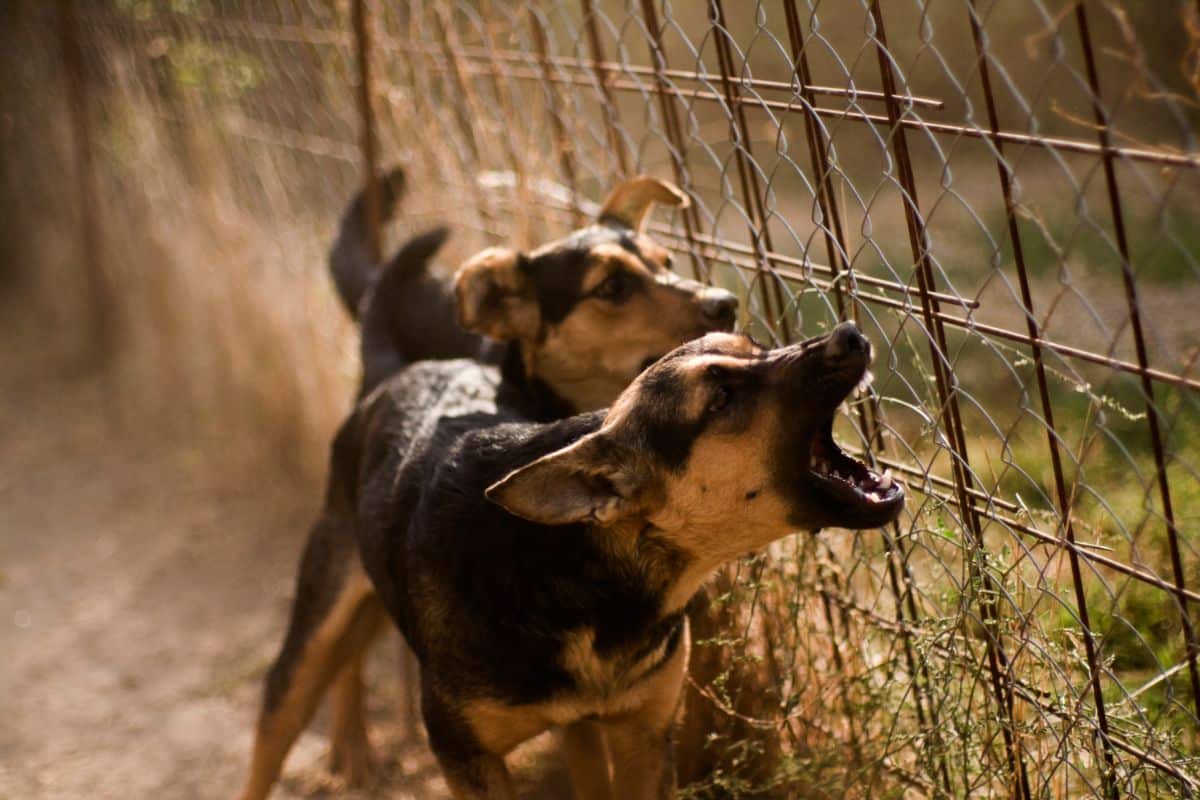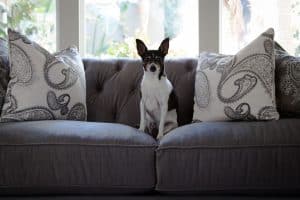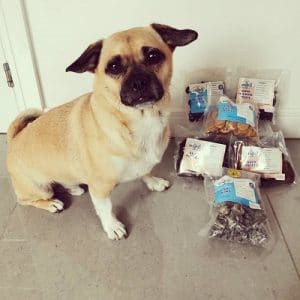As much as I love having my jug, Jeff, around, keeping him safe, happy and healthy takes effort. Early on, one of my concerns was the potential hazards in the garden.
My concerns grew when Jeff seemingly ate a toxic flower. It turned out to be non-toxic, but that was a roller coaster ride I did not want again.
So I took it upon myself to dogproof the garden. Over the years, my DIY dog-proofing setup has evolved a lot, and I will share all of that with you.
In this guide, I’ll walk you through the essential steps to dog-proof your garden, covering everything from securing the perimeter to choosing dog-friendly plants and decor.
Because let’s face it, a safe garden equals a happy dog, and a happy dog equals a happy you.
Step 1: Assess Your Garden.
Before transforming the garden into a canine wonderland, I like to step back and assess what we’re working with. Trust me, this is a lesson I learned the hard way.
Not all gardens are created equal, and what may seem like a harmless space to you can be a minefield of potential risks for your dog.
Step 2: Protect Your Garden from Your Dog
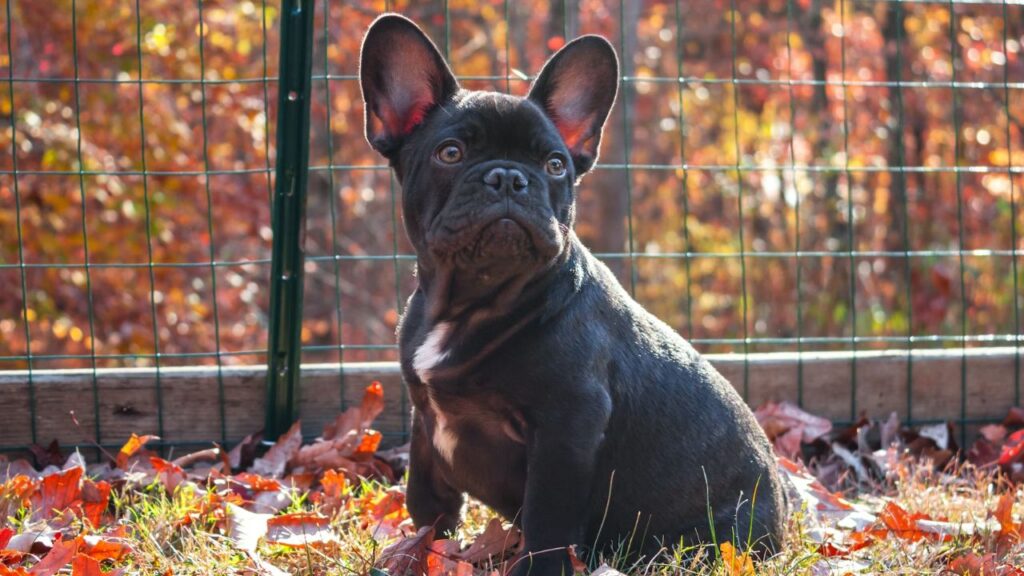
1. Secure the perimeter.
Now, let’s dive into making it a fortress of safety for your dog. Don’t worry; you won’t need a moat or drawbridge, but some strategic planning can go a long way.
Barrier / Fences:
Generally speaking, a tall wooden fence with no gaps is the best for dog-proofing your garden. It’s secure, difficult to climb, and provides privacy. Keep the fence at least 6 feet high to deter jumpers and climbers. And always check for weak points where your dog might squeeze through.
You’ve got 3 main options when it comes to buying a fence.
- Wooden fences are strong and durable but require maintenance to prevent rot.
- Chain link fences are less expensive but easier for a determined dog to climb.
- Electric fences are effective but unsuitable for all dogs and could pose a potential safety risk.
Pro Tips for Safety:
- Make sure the area under the fence is secured, or your doggo will be able to dig through it.
- Ensure the material isn’t treated with CCA or other toxic chemicals for wooden fences.
Gate Latches and Locks:
A simple latch may not be enough if your dog is a budding escape artist. Consider installing a double latch system or even a padlock for added security. Ensure it’s set up at a certain height your doggo can’t reach.
2. Avoid exposed soil & use self-repairing grass.
Let’s face it: dogs love to dig. If you’ve got patches of exposed soil, your pup might see it as an open invitation to go treasure hunting.
Try planting strong, self-repairing grass like Buffalo grass or Kikuyu for those with persistent diggers. These grass types can withstand the occasional digging spree and keep your garden looking lush.
Pro Tip: Using raised beds or bordering flower beds with rocks can also be a physical deterrent for your digging doggo.
3. Create a dog zone for them to enjoy.
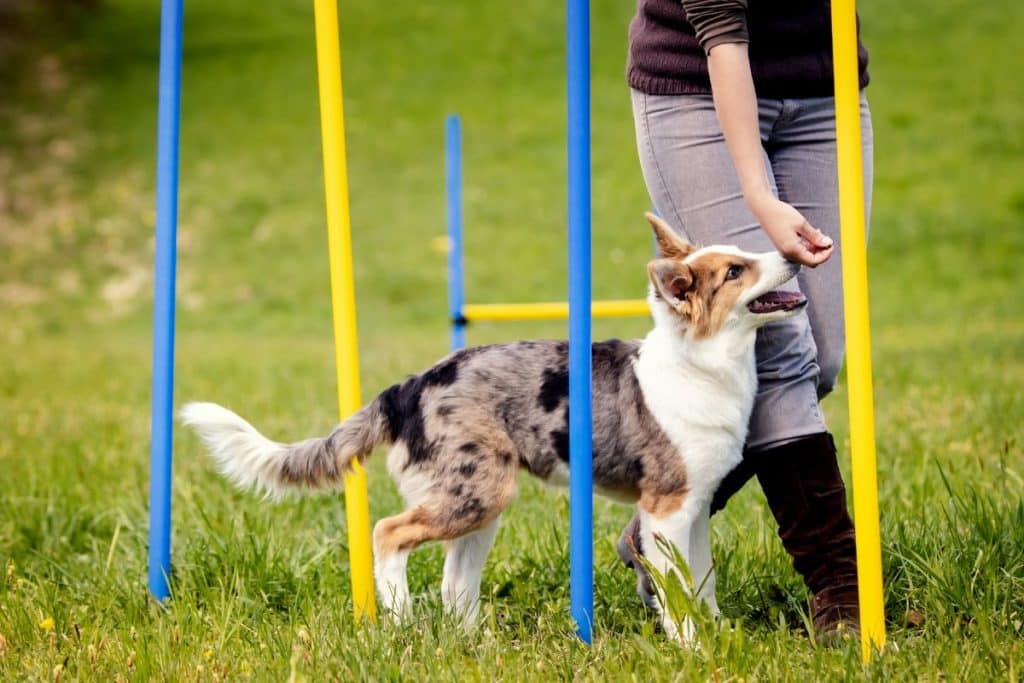
Think of a dog zone as your pup’s VIP area in the garden. It’s a space where they can roam freely, dig to their heart’s content, and even nap without jeopardising the rest of your garden.
So, what features should you include in this DIY dog zone? Well, it could range from the basics to a more elaborate setup, but here are some basic elements:
- Shade and Shelter: Make sure your dog can escape the sun on rain, whether a simple sunshade or a full-fledged doghouse.
- Water Station: Include a water dish or a small fountain for your pup to sip.
- Toys and Activities: Keep your dog mentally and physically stimulated by adding some toys, tunnels, or even a digging box in this zone.
Pro Tip: Use landscape fabric and mulch in this area to make it easier to clean and keep it mud-free.
The best advice I can give you is that designing a dog zone doesn’t have to be complex. It just needs to be safe, engaging, and tailored to your dog’s needs.
4. Deterrents and Barriers
A. Sprays and Natural Deterrents
First up are sprays. You can find several dog-repelling sprays in the market, but ensuring they’re pet-safe is essential.
Better yet, why not go natural? A homemade mix of water and white vinegar can act as a repellent. Just spritz it on areas you don’t want your dog to go.
Will coffee grounds keep dogs out of the garden?
While some folks swear by coffee grounds as a deterrent, the efficacy is a bit hit-or-miss. There’s also the fact that excessive coffee grounds can harm dogs. Tread carefully here.
Will cayenne pepper keep dogs out of the garden?
Generally speaking, cayenne pepper can deter dogs and irritate their eyes and nose. It’s effective, but use it judiciously and watch for any signs of discomfort in your pet. It’s not a method that I would recommend.
Physical Barriers
This method is like giving your dog a visual “Do Not Enter” sign. Small, ornamental fences can protect flower beds, while larger, more robust barriers can safeguard vegetable gardens.
Pro Tip: Combine physical barriers with natural deterrents for better efficiency. For instance, a small fence around a flower bed sprayed with vinegar could work wonders.
Step 3: Pet-Proof the Garden to Protect Your Dog
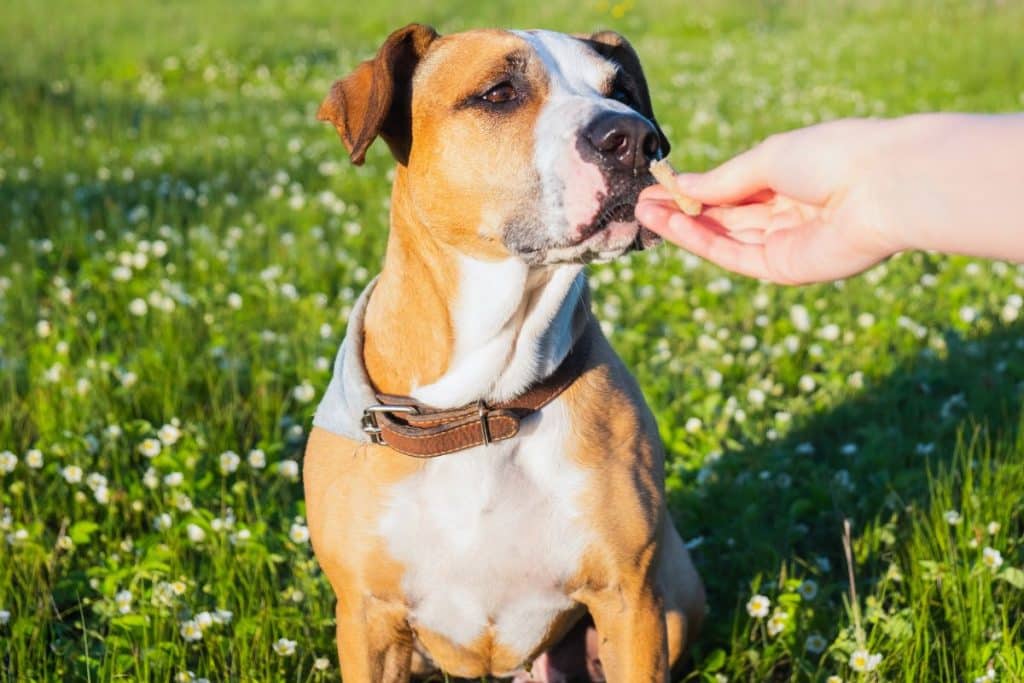
1. Only use dog-friendly plants.
Plants can add that aesthetic value, but let’s not forget—some are more pet-friendly than others.
List of Safe Plants for Dogs: Aster, camellias, daylilies, hibiscus, lavender, marigolds, rosemary, roses, snapdragon, sunflowers, and herbs (sage, thyme, cilantro, etc.).
Plants to Avoid: Aloe vera, azalea, begonia, carnation, chrysanthemum, daisy, daffodil, foxgloves, geranium, hyacinth, hydrangea, iris, lily of the valley, morning glory, oleander, sago palm, and tomato plants.
2. Garden Ornaments and Decor
I don’t know about you, but I LOVE garden ornaments. However, we should be cautious here, especially when your dog sees the entire yard as a playground.
Safe Options: Opt for larger, sturdier ornaments made of materials like stone or metal. Anything too small or fragile might get destroyed and pose a choking hazard for your dog.
Items to Avoid: Stay clear of any decor with small, detachable parts or anything made of glass. As captivating as that wind chime or glass orb may look, it’s an accident waiting to happen.
Pro Tip: Choose interactive garden ornaments that can also serve as playthings for your dog, like durable rubber balls or toys anchored to the ground.
3. Cover Ponds/Pools When Unused
You might think your dog is a good swimmer, but pools and ponds can be slippery and challenging to climb out of. Covering them when not in use is a precaution worth taking.
How to Cover: Use durable mesh or hard pool covers to withstand your dog’s weight. Make sure they are securely anchored to prevent accidental slips.
4. Keep the Garden Gate Shut
Lastly, the garden gate is like the front door to your dog’s outdoor mansion.
An open gate is like an open invitation for your dog to explore the world beyond, and let’s be honest, that’s rarely a good thing. Make sure it’s shut all the time.
Optional: Invest in a self-closing gate with a reliable latch if you’ve the budget.
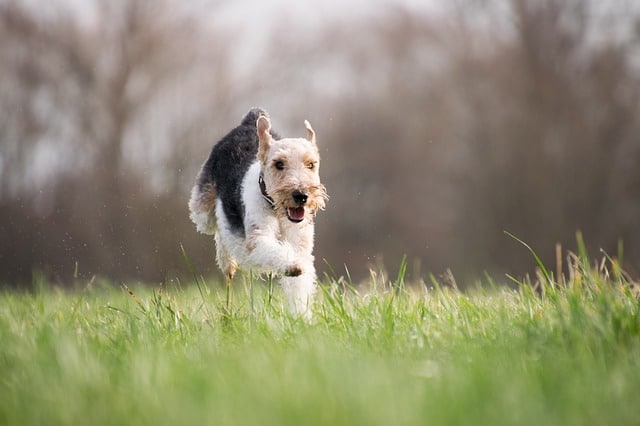
Step 4: Maintenance and Upkeep
Regularly walk around your garden to look for signs of wear and tear. This includes checking the fence for any new holes or gaps, ensuring all latches are secure, and looking at the garden ornaments to ensure they’re safe.
Ongoing maintenance doesn’t have to be expensive. Let me give you a rough estimate of what your upkeep costs will look like.
Monthly Maintenance & Upkeep (£60 – £140):
- Pet-Safe Fertilizers and Weed Killers: £10-£20
- Replacement Plants: £10-£30
- General Upkeep Supplies (like soil, mulch, etc.): £20-£40
- Maintenance Checks (DIY or professional): £20-£50 if you opt for a monthly professional service.
Annual Maintenance & Upkeep (£200 – £400):
- Fence Maintenance: £100-£200
- Decor and Ornament Replacement: £50-£100
- Miscellaneous (tools, extra latches, etc.): £50-£100
Pro Tip: Keep a maintenance log. It can be as simple as setting reminders on your phone or keeping a garden journal.
How much will it cost to dog-proof my garden?
On average, you can expect to spend between £920 – £1640 on the initial setup costs for dogproofing your garden in the UK. This includes suitable fencing, sturdy latches, dog-friendly plants, deterrents, barriers, ornaments, pool/pond covers and items for creating the dog zone.
- Fencing: A quality wooden fence may cost around £50-£70 per panel. You may need 10 panels for an average-sized garden, costing around £500-£700.
- Gate Latches and Locks: Heavy-duty double latches may cost around £20-£40.
- Dog-Friendly Plants: Depending on the variety, costs can range from £5-£20 per plant. You might spend around £100-£200 on plants for a medium-sized garden.
- Dog Zone Creation: This could include a small dog house, toys, and a play area. Estimated cost: £200-£400.
- Deterrents and Barriers: Natural deterrent sprays and physical barriers like rocks can cost around £30-£50.
- Garden Ornaments and Decor: Pet-safe ornaments cost between £20-£100.
- Pond/Pools Covers: These can range from £50-£150 depending on the size and material.
Frequently Asked Questions (FAQs)
1. Is it illegal to leave a dog in the garden in the UK?
While it’s not explicitly illegal to leave a dog in the garden in the UK, animal welfare laws stipulate that pets must have access to shelter and fresh water at all times. Also, you must ensure the garden is securely fenced to prevent the dog from escaping and possibly causing harm.
5. Do I need to walk my dog if I have a garden?
Generally, A garden is beneficial for playtime and exercise but is not a complete substitute for walking your dog. Walks are essential not just for exercise but also for mental stimulation, training, and socialisation. Varying your dog’s exercise routine will keep them happy and well-balanced.
